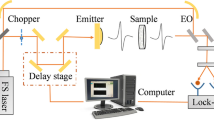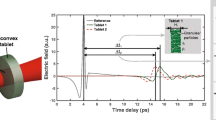Abstract
Introduction
Transmission Raman Spectroscopy (TRS) has become an increasingly applied technology in the analysis of pharmaceutical tablets for quality control purposes and developing formulation and process understanding. One area that has received only cursory attention to date is that of bilayered tablets that represents an unusually challenging situation. This study aims to provide an understanding of the relationship of the active pharmaceutical ingredient (API) content and the transmission Raman spectral response in bilayered pharmaceutical tablets to facilitate development of quantitative models for the prediction of API content in multilayer tablets.
Methods and Results
The Raman intensity was considered as a function of the Raman photon generation and decay in a layer of interest (the API layer) and Raman photon decay from a second layer (the non-API layer). To separate and understand the various contributions, a variety of tablet configurations were studied and it was found that (1) with increasing the thickness of the non-API layer, the API Raman signal displayed an exponential decay as a function of the non-API layer thickness as well as the total tablet thickness; (2) when only changing API concentration, the Raman signal linearly responds to the API content; and (3) when increasing the weight/thickness of the API layer and keeping the non-API layer constant, the Raman signal reaches a maximum at a particular thickness and then decays as tablets become thicker. The complex spectral response was effectively modeled according to a modified Schrader, Kubelka-Munk model where both the Raman photon generation factor and photon losses were accounted for. Coupling the results of these studies together yields a comprehensive approach for modeling multi-component bilayer tablets. The addition of a beam enhancer on the bottom surface allowed for a selective over-enhancement of the bottom layer, which helps in the analysis of thin layers or coatings.










Similar content being viewed by others

References
Buckley K, Matousek P. Recent advances in the application of transmission Raman spectroscopy to pharmaceutical analysis. J Pharm Biomed Anal. 2011;55:645–52.
Pelletier MJ, Larkin P, Santangelo M. Transmission Fourier transform Raman spectroscopy of pharmaceutical tablet cores. Appl Spectrosc. 2012;66:451–7.
Matousek P, Parker AW. Bulk Raman analysis of pharmaceutical tablets. Appl Spectrosc. 2006;60:1353–7.
Ito M, Suzuki T, Yada S, Nakagami H, Teramoto H, Yonemochi E, et al. Development of a method for nondestructive NIR transmittance spectroscopic analysis of acetaminophen and caffeine anhydrate in intact bilayer tablets. J Pharm Biomed Anal. 2010;53:396–402.
Alcala M, Leon J, Ropero J, Blanco M, Romanach RJ. Analysis of low content drug tablets by transmission near infrared spectroscopy: selection of calibration ranges according to multivariate detection and quantitation limits of PLS models. J Pharm Sci. 2008;97:5318–27.
Griffen JA, Owen AW, Matousek P. Development of transmission Raman spectroscopy towards the in line, high throughput and non-destructive quantitative analysis of pharmaceutical solid oral dose. Analyst. 2014;140:107–12.
Rodrigues L, Thompson B, McGuigan P, Thurau G, Carolan J. Bi-layer tablet assay by reflectance NIR—development and implementation. Presentation at IFPAC 2012, Baltimore, MD.
Johansson J, Sparen A, Svensson O, Folestad S, Claybourn M. Quantitative transmission Raman spectroscopy of pharmaceutical tablets and capsules. Appl Spec. 2007;61:1211–8.
Fransson M, Johansson J, Sparen A, Svensson O. Comparison of multivariate methods for quantitative determination with transmission Raman spectroscopy in pharmaceutical formulations. J Chemometr. 2010;24:674–80.
Matousek P, Everall N, Littlejohn D, Nordon A, Bloomfield M. Dependence of signal on depth in transmission Raman spectroscopy. Appl Spectrosc. 2011;65(7):724–33.
Oelkrug D, Honnen W, Wilkinson F, Willsher CJ. Modelling of transient production and decay following laser excitation of opaque materials. J Chem Soc Faraday Trans. 1987;2(83):2081–95.
Thennadil SN. Relationship between the Kubelka-Munk scattering and radiative transfer coefficients. J Opt Soc Am A Opt Image Sci Vis. 2008;25(7):1480–5.
Schrader B, Hoffman A, Keller S. Near-infrared Fourier transform Raman spectroscopy: facing absorption and background. Spectrochimic Acta. 1991;47A:1135–48.
Schraeder B, Bergmann G. Die Intensität des Ramanspektrums polykristalliner substanzen—I. mitteilung strahlungsbilanz von substanz und probenanordnung. Fresenius’ Z Anal Chem. 1967;225:230–47.
Oelkrug D, Ostertag E, Kessler RW. Quantitative Raman spectroscopy in turbid matter: reflection or transmission mode? Anal Bioanal Chem. 2013;405:3367–79.
Townshend N, Nordon A, Littlejohn, Andrews J, Dallin P. Effect of particle properties of powders on the generation and transmission of Raman scattering. Anal Chem. 2012;84:4665–70.
Pellow-Jarman MV, Hendra PJ, Lehnert RJ. The dependence of Raman signal intensity on particle size for crystal powders. Vib Spectrosc. 1996;12(2):257–61.
Everall N, Hahn T, Matousek P, Parker AW, Towrie M. Photon migration in Raman spectroscopy. Appl Spectrosc. 2004;58(5):591–7.
Everall N, Priestnall I, Dallin P, Andrews J, Lewis I, Davis K, et al. Measurement of spatial resolution and sensitivity in transmission and backscattering Raman spectroscopy of opaque samples: Impact on pharmaceutical quality control and Raman tomography. Appl Spectrosc. 2010;64(5):476–84.
Pelletier MJ. Sensitivity-enhanced transmission Raman spectroscopy. Appl Spectrosc. 2013;67(8):829–40.
Eremeeva TP, Vorsina IA. Selection of optimum conditions for recording the Raman spectra of powders with laser excitation. Appl Spectrosc. 1976;25(5):1361–4.
Klosowski J, Steger E. Experiments on Raman versus primary light scattering fluxes from pressed discs. J Raman Spectrosc. 1979;8(3):169–71.
Matousek P. Raman signal enhancement in deep spectroscopy of turbid media. Appl Spectrosc. 2007;61:845–54.
Acknowledgments
The authors would like to thank Pavel Matousek and Pankaj Shah for their insight and helpful discussions during the course of this work.
Author information
Authors and Affiliations
Corresponding author
Rights and permissions
About this article
Cite this article
Zhang, Y., McGeorge, G. Quantitative Analysis of Pharmaceutical Bilayer Tablets Using Transmission Raman Spectroscopy. J Pharm Innov 10, 269–280 (2015). https://doi.org/10.1007/s12247-015-9223-8
Published:
Issue Date:
DOI: https://doi.org/10.1007/s12247-015-9223-8



